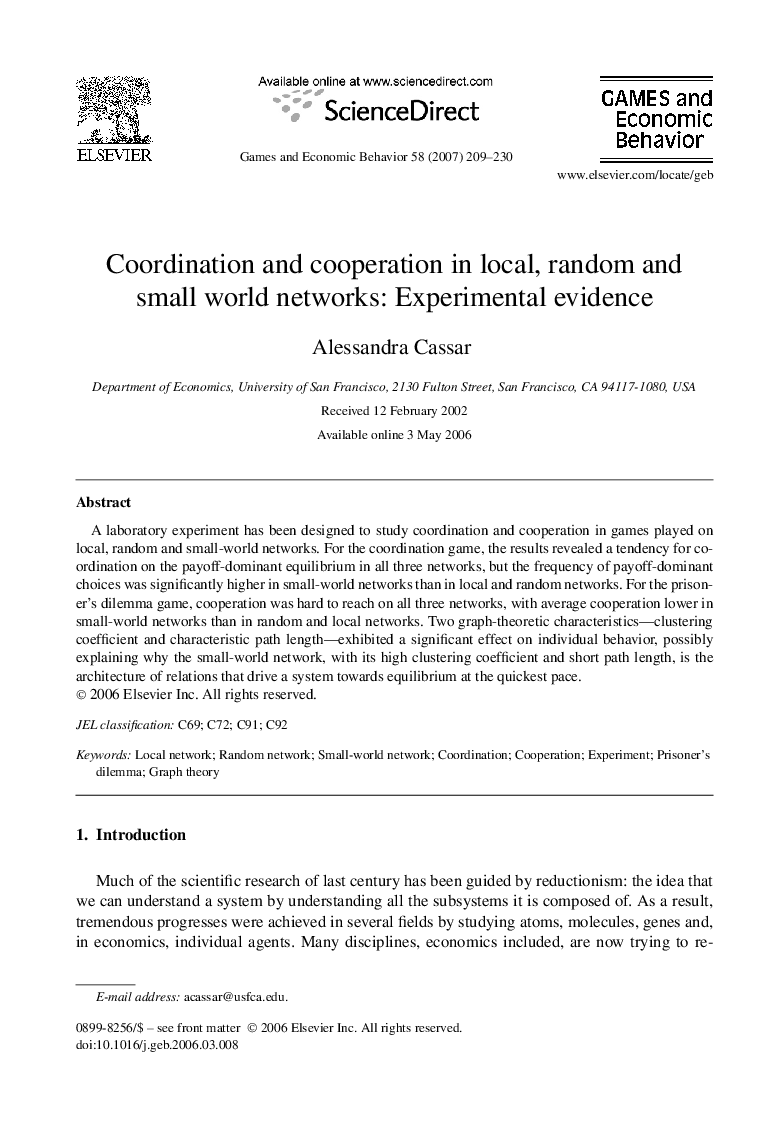| Article ID | Journal | Published Year | Pages | File Type |
|---|---|---|---|---|
| 5073041 | Games and Economic Behavior | 2007 | 22 Pages |
A laboratory experiment has been designed to study coordination and cooperation in games played on local, random and small-world networks. For the coordination game, the results revealed a tendency for coordination on the payoff-dominant equilibrium in all three networks, but the frequency of payoff-dominant choices was significantly higher in small-world networks than in local and random networks. For the prisoner's dilemma game, cooperation was hard to reach on all three networks, with average cooperation lower in small-world networks than in random and local networks. Two graph-theoretic characteristics-clustering coefficient and characteristic path length-exhibited a significant effect on individual behavior, possibly explaining why the small-world network, with its high clustering coefficient and short path length, is the architecture of relations that drive a system towards equilibrium at the quickest pace.
